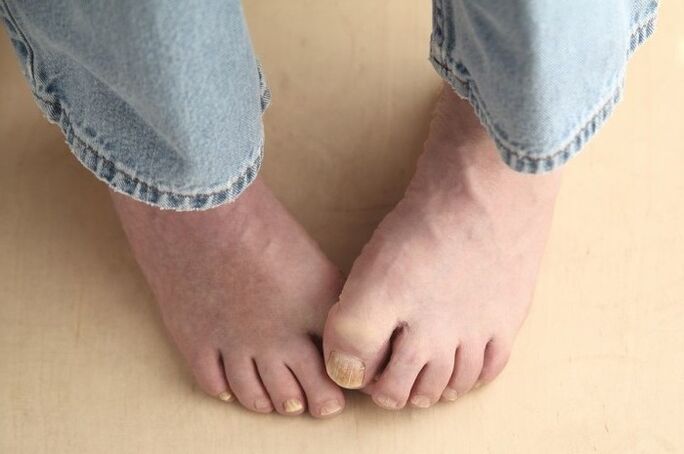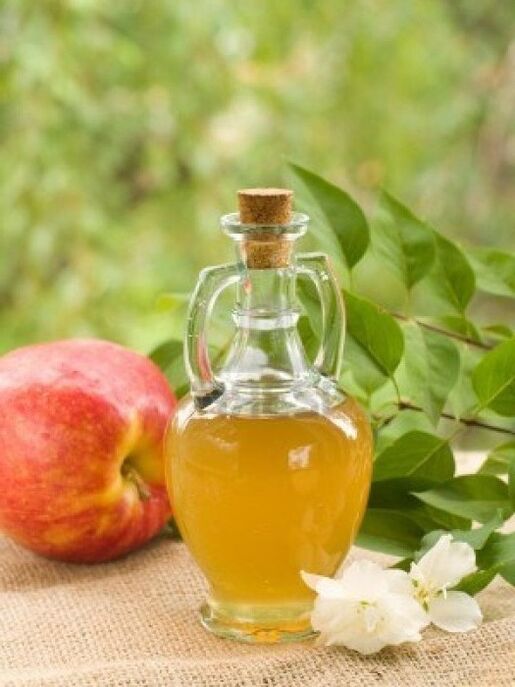Fungal infection of toenails is a rather unpleasant disease. In addition to aesthetic discomfort, this has a negative effect on the patient's immune system. As therapeutic practice shows, pharmaceutical drugs do not always help to achieve the desired result. And if we also take into account their harmful effects on the whole body, then it is worth seriously thinking about the meaning of such therapy. Therefore, a natural question arises for the carrier of the infection: how to get rid of toenail fungus in order to forget about the disease forever.

Advantages and disadvantages of home therapy
I would like to immediately warn the reader that one should not expect quick results from traditional medicine recipes. The desired effect at home can be seen only after regular daily procedures for a certain period. It should also be noted that nail fungus comes in many types, so each recipe should be selected only on an individual basis.
Home therapy has the following advantages:
- natural. The medicine, prepared at home, includes only natural and well-known ingredients;
- the ability to influence various types of fungal infections. In addition to effective treatment, the home remedy not only does not have a harmful effect on the body, but also allows you to strengthen the protective functions;
- selection of components taking into account individual characteristics of the body. When making a recipe, it is possible to refuse allergic raw materials;
- availability. Any home remedy for fungus does not use rare components, which allows you to avoid storing them for future use and make the medicine as needed.
Preparatory procedures
During treatment, hygiene must be observed that does not allow the fungal colony to multiply. It includes daily changing of socks, water procedures and use of items for personal use only. Before using external products, affected nails are subjected to the following treatment:
- soak the nail plate in medicinal baths of soap and soda solution;
- remove affected areas with a nail file, tweezers or scissors;
- application of the medication.
Strengthening the immune system is of no small importance in successfully eliminating fungal infections from the body. To this end, experts recommend taking special vitamin complexes that increase the protective functions of the body.
Vinegar Recipes
Vinegar has received good reviews against fungal infections of the nail plate. Its action is based on the inability of fungal spores to survive in an acidic environment. The correct proportion of the drug is a prerequisite for successful treatment.
To prepare medicines at home, any type of vinegar is used: table vinegar or apple vinegar. The latter type is preferable because it is prepared using only natural ingredients. You can also use vinegar essence, but diluted to the required concentration.
Vinegar baths
This method is the simplest and most comfortable way to remove fungus on the nail. Treatment with this method lasts approximately 2 weeks, alternating with other methods.
- Heat 0. 5 liters of 9% vinegar to a pleasantly warm temperature and pour it into a basin. Dip affected fingers into the liquid and hold for 15 minutes. Do not rinse with water. For greater effect, you can wear socks soaked in vinegar overnight;
- Vinegar diluted with carrot juice 1: 1 also helps to get rid of fungus well. Heat the mixture to 40° and steam the leg of lamb;
- Infuse a packet of dried celandine in 1 liter of table vinegar. The infusion period does not matter - the longer the better. Add about 5 tablespoons to the filtered infusion. L. table salt and stir. Use as a warm bath for 5 minutes. To enhance the effect, the procedure is carried out several times a day.
Vinegar ointments
- Pour 100 g of vinegar essence into a fresh chicken egg. Leave in a dark place for 5-7 days to dissolve the eggshells. Add melted or soft butter to the resulting mixture, then beat everything. The resulting emulsion should resemble mayonnaise. Apply the ointment to the affected nail every evening until the external signs completely disappear. During treatment, the nail plate will soften and peel off. To eliminate the affected area more quickly, it can be carefully cut;
- for this ointment you will need 1 tsp. mix dimethyl phthalate with 1 tbsp. L. any vinegar and vegetable oil. A raw egg is added to the well-mixed ingredients and everything is beaten. The finished ointment is stored in the refrigerator and used as
 dressings in the evening.
dressings in the evening.
Other recipes with vinegar
Dilute vinegar essence with plain water 1: 1 and mix with flaxseed meal. Knead a firm dough that resembles playdough and wrap it in plastic. If necessary, pinch off a piece of dough, form a flat cake and place it on the affected nail, securing it on top with a bandage. The treatment is carried out for 5 days.
Iodine nail treatment
Another available and proven remedy is an alcohol solution of iodine, which is an excellent antiseptic and has tanning and cauterizing properties. Its action is based on its ability to coagulate the proteins that make up parasitic fungi.
Daily use of iodine as an antifungal agent has received good reviews. However, before treatment, it is recommended to test the individual tolerance of the skin, as cases of allergic reactions are known. To do this, simply apply a drop of the substance to the crease of your elbow and wait for about a day. If there is itching or redness, this method is not suitable for you. If no changes are noted on the skin, you can safely start treatment.
The most famous method is simply applying a drop of iodine to the nail plate with a cotton swab twice a day.
It is especially important to ensure that the nail surface is completely saturated with iodine, as live fungal spores may remain in untreated areas.
After a week, a slight burning sensation may appear in the area to be treated, which indicates the effectiveness of the treatment and is a sign of the destruction of the fungal colony.
Proven recipes with iodine
Other recipes with iodine are also used at home, including various components:
- Grind well-dried celandine and mix it with iodine to form a thick paste. Apply the resulting composition to the affected nail, cover the top with polyethylene and fix overnight. To remove the nail plate, 3-5 sessions are usually enough;
- in a bowl of hot water (3 liters), dissolve a small bottle of 5% iodine solution or replace it with manganese until the liquid turns pink. Spray your nails for about 10 minutes, then dry them thoroughly and apply a penicillin bandage. The procedure is carried out about 3 times and an improvement in the condition of the nail plate is observed from the first time;
- Mix the iodine solution with apple cider vinegar (1: 1) and mix well. Apply to the nail plate twice a day. Continue treatment for at least 20 days.
Baking soda against fungus
The well-known baking soda has become widespread not only in cooking, but also in medicine. Thanks to its alkalizing properties, the body's alkaline reserve increases and the acid-base balance is normalized. As for fungal infections, the effectiveness of baking soda is due to the alkalization of the surface of the nail plate, which allows creating uncomfortable conditions for the reproduction and vital activity of fungal spores.
Soda baths
- For the bath you will need 2 liters of liquid (40°), baking soda (2 tablespoons) and soap (grated or liquid at the rate of 1 tablespoon). Mix all the ingredients thoroughly. Dip your fingers in the solution for 20 to 30 minutes, then use a pumice stone or foot file to remove the softened layer of the nail. Then dry your toes thoroughly and put a clean sock on your foot. Use until the external signs of fungus on the nail plate completely disappear;
- A recipe containing half a cup of soda, 4-5 cups of water (40°), ¼ of the same container of hydrogen peroxide and vinegar is considered a powerful remedy. You can add half a cup of Epsom salt if you like. Once the solution is well mixed, you can spray your feet. The procedure lasts about half an hour and is performed every evening.
Baking soda paste
To prepare it you will need to prepare 2-3 teaspoons of soda, a little water and lemon. Mix the first two components until you obtain a homogeneous paste. Apply the resulting composition to the affected nail and immediately squeeze a few drops of lemon juice. A reaction should occur, accompanied by slight foaming and hissing. After a few minutes, the paste can be washed off with clean water and your feet can be dried.
To make dough, you can use another simple and affordable recipe. To prepare you will need vegetable oil (can be replaced with tea tree oil or another type) and soda. Both components are mixed until a pasty state, after which they are applied to the steamed nail plate. The paste on the nail is covered with polyethylene and kept overnight. In the morning, the bandage is removed and the nail is washed with water and dried.
Hydrogen peroxide treatment
Hydrogen peroxide has a good effect against nail fungus. It can be used as both a main action and an auxiliary action. The secret of this product lies in its ability to destroy various pathogenic microflora. To get rid of a fungal infection on the nail surface, it is enough to apply a cotton pad soaked in this solution to the affected area for 2-3 months. The procedure is carried out twice a day, the duration of which varies within 5 minutes.
You can also take baths with this medicine. Hydrogen peroxide is combined with warm water (2 tbsp: 1 l). Steam your legs in several sets for 30 seconds with a 2 minute break.
Despite the seeming simplicity of the recipes, each of them has the amazing ability to get rid of fungus on the nail plate. Therefore, regular implementation of such procedures will help get rid of this insidious disease for a long time.
















